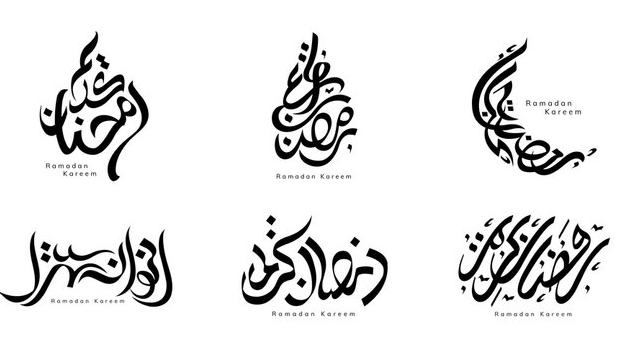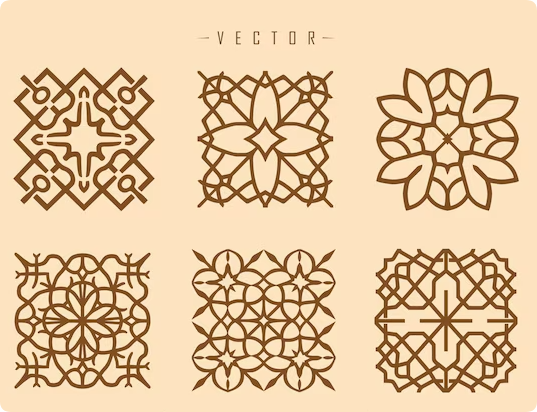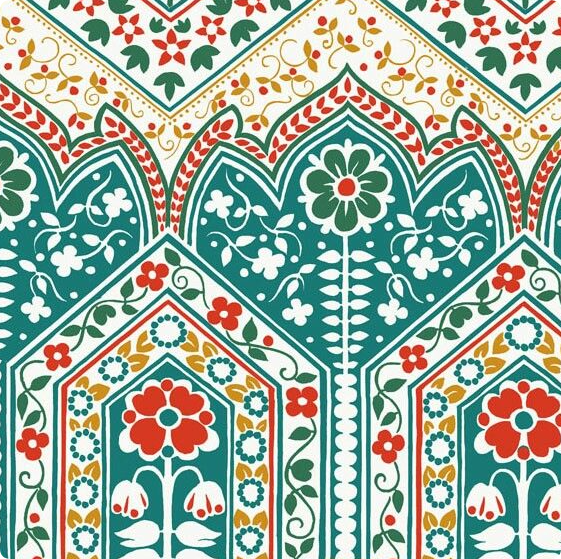The Middle East, known for its rich traditions and profound cultural heritage, holds a special affinity for luxury ceramic and porcelain drinkware. This preference is deeply rooted in the region’s love for tea and coffee culture, a central aspect of social interactions and hospitality. From finely crafted tea sets to elegantly designed coffee cups, Middle Eastern consumers have a growing demand for premium quality ceramic and porcelain products that combine functionality with aesthetics.
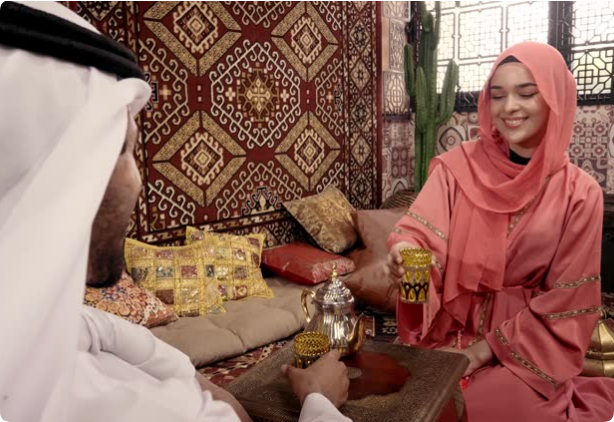
This blog explores the factors driving this demand, the ideal features of ceramic drinkware for Middle Eastern consumers, and insights into the market trends shaping this preference.
The Cultural Importance of Tea and Coffee in the Middle East
Tea and coffee are more than just beverages in the Middle East; they symbolize respect, generosity, and community. Serving these drinks in beautifully designed drinkware reflects the host’s hospitality and attention to detail. The two most popular traditions in the region are:
- Arabian Coffee (Qahwa): Served in small, handleless cups called “finjans,” Arabian coffee is often accompanied by dates and is deeply embedded in social and formal gatherings.
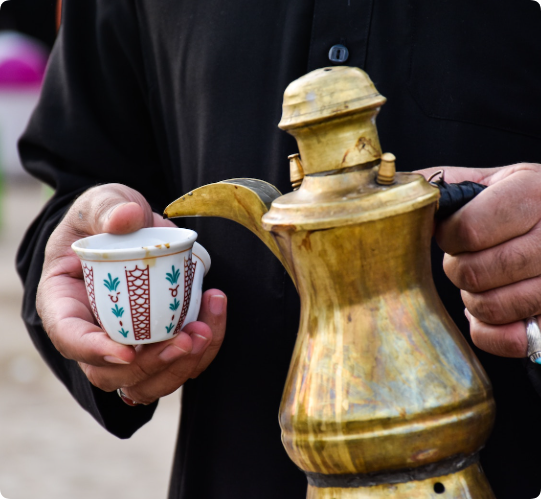
- Traditional Tea: Black tea, often infused with mint or cardamom, is served in ornate cups and is a staple in daily life and celebrations.
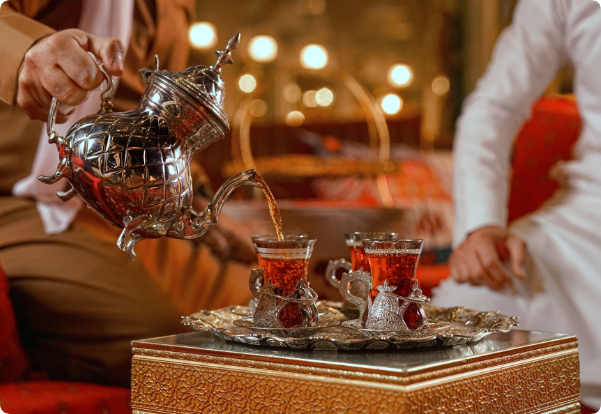
Both require specific types of drinkware that enhance the experience, making the material, design, and functionality crucial.
Why Ceramic and Porcelain?
1. Material Excellence
- Ceramic and porcelain are renowned for their durability, thermal insulation, and non-reactive surfaces, ensuring that the drink’s flavor remains unaltered.
- These materials exude elegance, a quality highly valued in the Middle East, where drinkware is often a statement of status and taste.
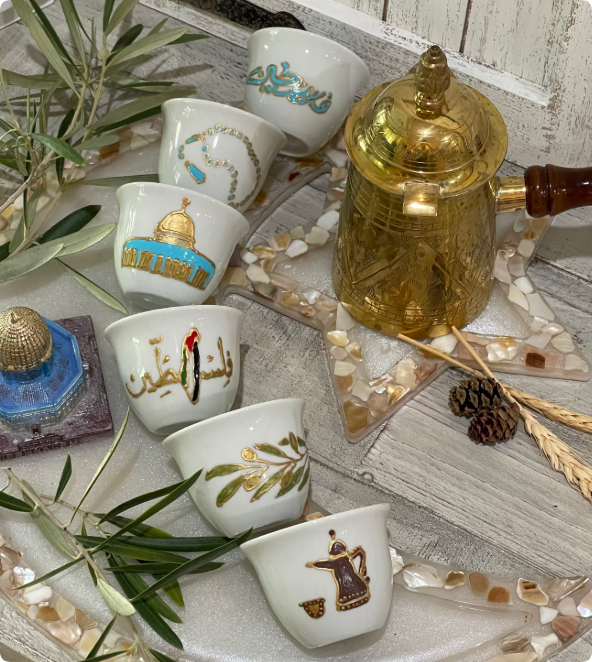
2. Aesthetic Appeal
- Intricate patterns, often inspired by Islamic art and Arabic calligraphy, align with Middle Eastern tastes.
- Glazed finishes and vibrant colors enhance visual appeal, complementing the region’s preference for opulence.
Features Middle Eastern Consumers Value in Luxury Ceramic Drinkware
Tea Sets
- Capacity: Tea cups with 100-150 ml capacity are preferred to maintain the ideal temperature for sipping.
- Design: Ornate patterns, gold or silver accents, and a touch of modern minimalism are highly sought after.
- Completeness: A full set includes cups, saucers, a teapot, and occasionally a tray.
Coffee Cups
- Capacity: Small cups (30-50 ml) for Qahwa; larger sizes (120-180 ml) for Western-style coffee.
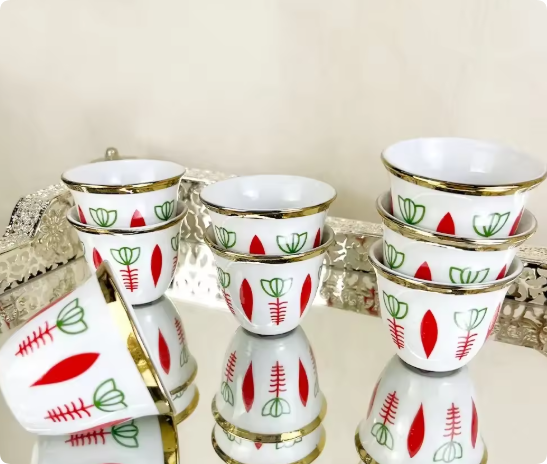
- Shape: Handleless for traditional styles, with ergonomic designs for Western preferences.
- Material Quality: Double-fired porcelain for a premium feel.
Matching Accessories
- Trays: Serveware with complementing patterns adds to the ceremonial experience.
- Sugar Bowls and Milk Jugs: Often included in tea and coffee sets to provide a complete hosting experience.
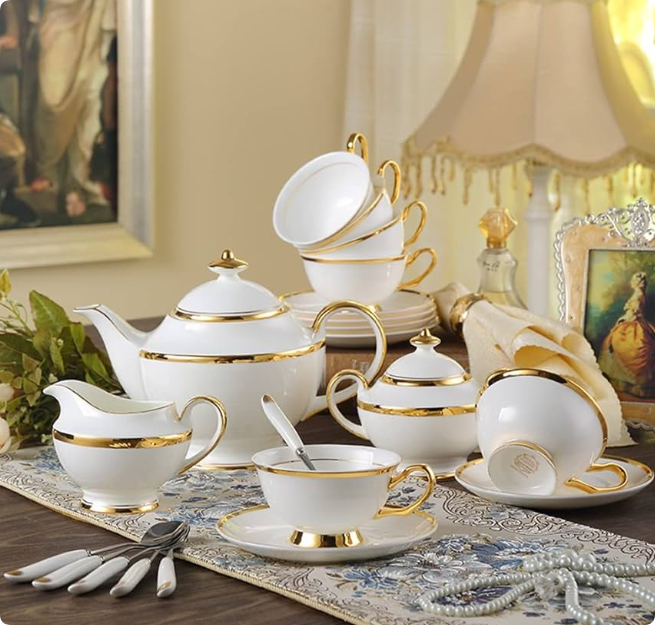
Key Market Trends and Insights
1. Fusion of Tradition and Modernity
Middle Eastern consumers appreciate a blend of traditional elements like Islamic motifs with contemporary minimalism. Brands incorporating these aspects have gained a significant edge.
2. Demand for Customization
Personalized engravings and bespoke designs, particularly for special occasions like weddings, are growing in popularity.
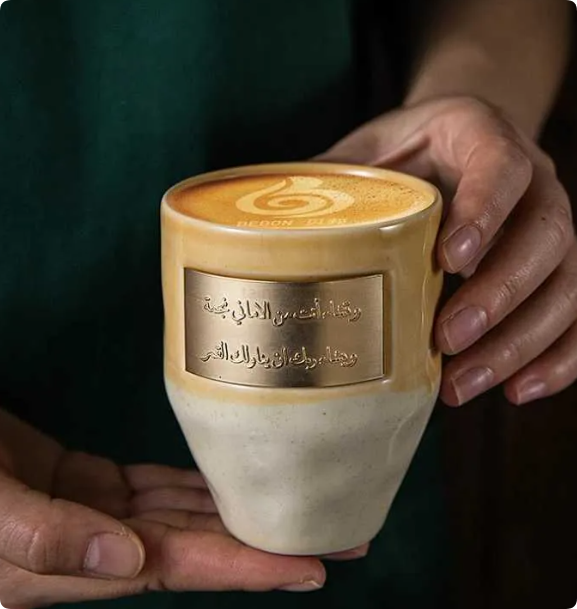
3. Focus on Sustainability
Environmentally conscious consumers prefer drinkware made from eco-friendly ceramic processes, reducing carbon footprints.
Comparative Analysis of Luxury Ceramic Drinkware for Middle Eastern Markets
| Feature | Traditional Tea Sets | Modern Coffee Cups | Fusion Style Sets |
|---|---|---|---|
| Design Inspiration | Islamic patterns, calligraphy | Minimalistic with gold/silver accents | Blend of traditional and contemporary |
| Material | High-quality ceramic or porcelain | Double-fired porcelain | Hybrid materials with a luxury touch |
| Capacity | 100-150 ml | 30-180 ml | Varies; tailored to consumer needs |
| Accessories | Includes teapot, tray, and sugar bowl | Optional saucers, ergonomic handles | Mix of traditional and modern accessories |
| Target Audience | Traditionalists, formal gatherings | Younger, style-conscious consumers | Broad appeal across age groups |
Color Trends and Decorative Elements for 2025
- Preferred Colors: Gold, turquoise, white, and deep red are dominant due to their cultural significance.
- Popular Motifs: Geometric designs, floral patterns, and Arabic calligraphy.
- Finishes: High-gloss and matte combinations are trending, offering a luxurious yet understated appeal.
Conclusion: Why the Middle East Prefers Ceramic and Porcelain
The Middle Eastern preference for ceramic and porcelain drinkware is a harmonious blend of tradition, luxury, and practicality. The region’s deep-rooted tea and coffee culture demands drinkware that is not only functional but also a reflection of artistry and elegance.
For manufacturers and suppliers, understanding these nuances is key to catering to this market. By combining high-quality materials with culturally resonant designs, brands can capture the hearts of Middle Eastern consumers.
About EKA
EKA specializes in crafting bespoke ceramic drinkware tailored to global markets, including the Middle East. From traditional tea sets to modern coffee cups, our products are designed to meet the unique needs of B2B clients. Reach out to EKA for quality-assured OEM and ODM solutions.

